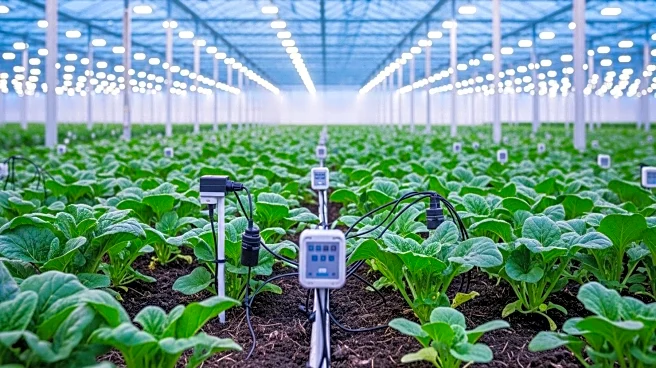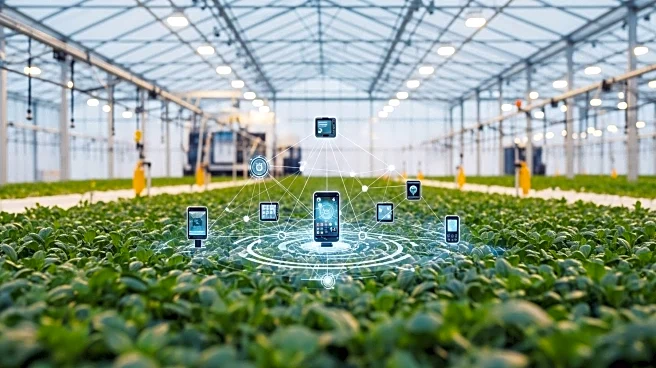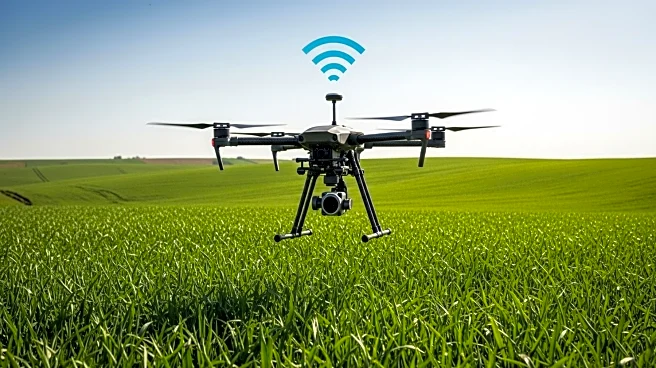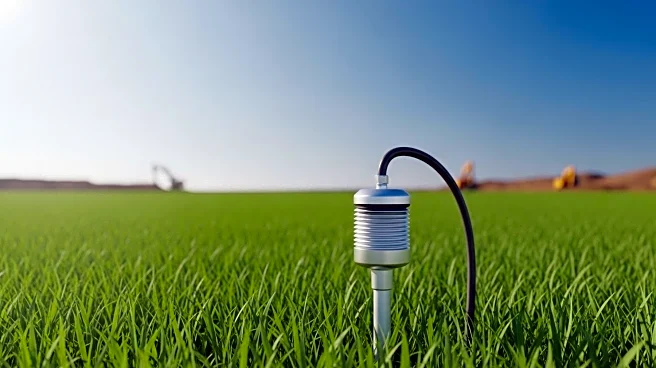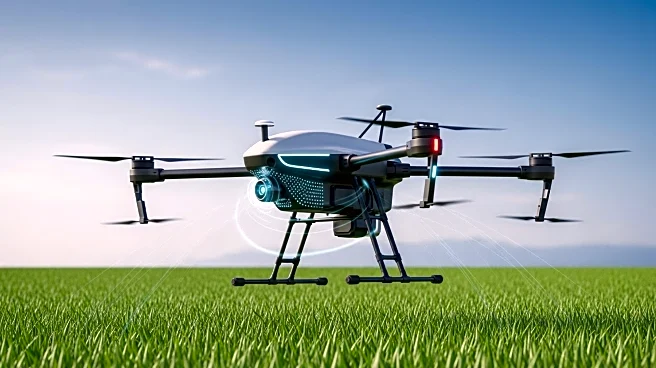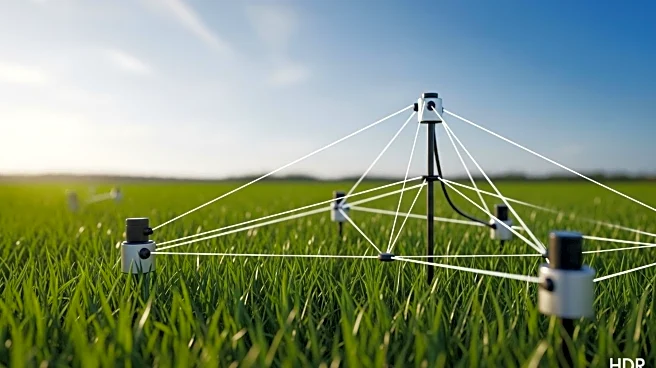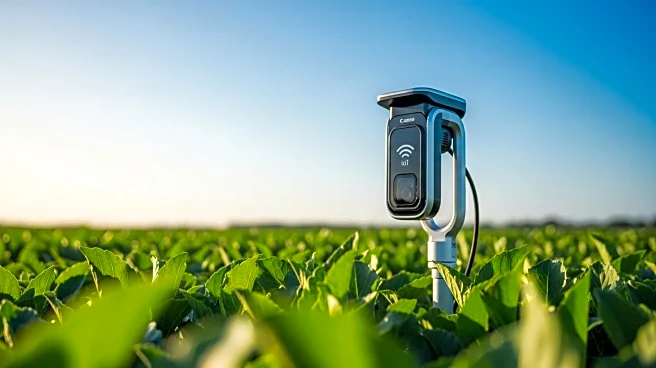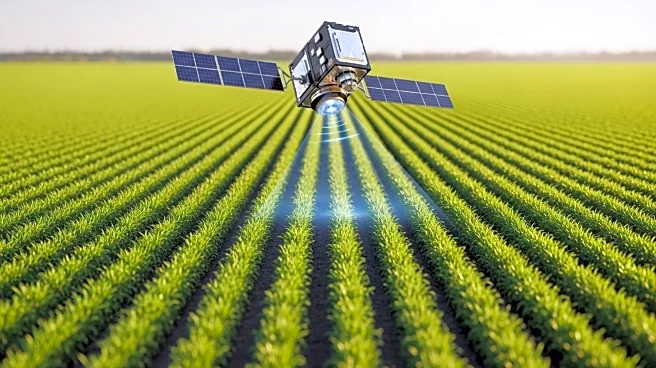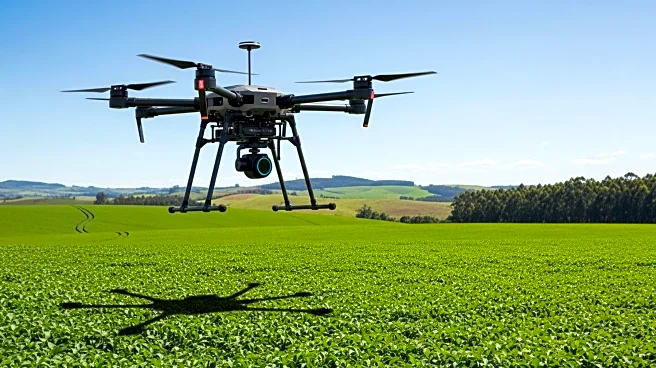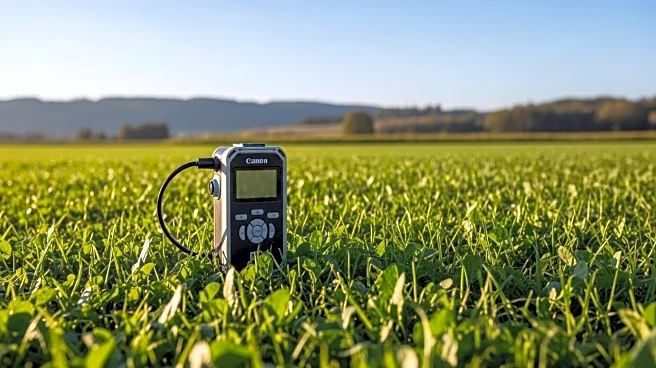What's Happening?
The global IoT Technology for Agriculture market is projected to reach USD 34.4 billion by 2031, growing at a compound annual growth rate (CAGR) of 12.3% from 2025 to 2031. This growth is driven by the increasing adoption of connected solutions in agriculture to enhance productivity, resource efficiency, and crop quality. IoT technologies enable real-time monitoring of various agricultural parameters such as soil conditions, weather patterns, and livestock health, facilitating data-driven decision-making. The integration of sensors, drones, and automated machinery supports precision agriculture practices, which are crucial for reducing input costs and optimizing yields. The rising global demand for food and the need for sustainable farming practices are key factors accelerating the adoption of IoT solutions in agriculture.
Why It's Important?
The expansion of IoT technology in agriculture is significant as it addresses critical challenges such as food security and sustainable farming. By enabling precision agriculture, IoT solutions help farmers optimize resource use, reduce waste, and increase crop yields, which are essential for meeting the growing food demands of a rising global population. Additionally, the integration of artificial intelligence and big data analytics into IoT systems provides predictive insights for better crop management and early pest detection, further enhancing agricultural efficiency. This technological advancement not only benefits large-scale agribusinesses but also makes smart farming accessible to small and medium-scale farmers, promoting inclusivity and resilience in the agricultural sector.
What's Next?
The IoT Technology for Agriculture market is expected to witness further advancements with the integration of artificial intelligence, machine learning, and big data analytics. These technologies will enhance predictive capabilities, allowing for more efficient resource allocation and improved crop management. The development of cloud-based platforms and mobile applications will increase accessibility for farmers, facilitating the widespread adoption of smart farming practices. As climate change and food security challenges intensify, IoT-enabled agriculture will play a crucial role in driving innovation and sustainability in global farming practices.
Beyond the Headlines
The adoption of IoT technology in agriculture also raises considerations regarding data privacy and security, as the increased use of connected devices can expose farms to cyber threats. Additionally, the initial cost of implementing IoT solutions may be a barrier for some farmers, particularly in developing regions. However, government initiatives and public-private partnerships aimed at promoting digital infrastructure and sustainable development can help mitigate these challenges, fostering a supportive environment for the growth of IoT technology in agriculture.

